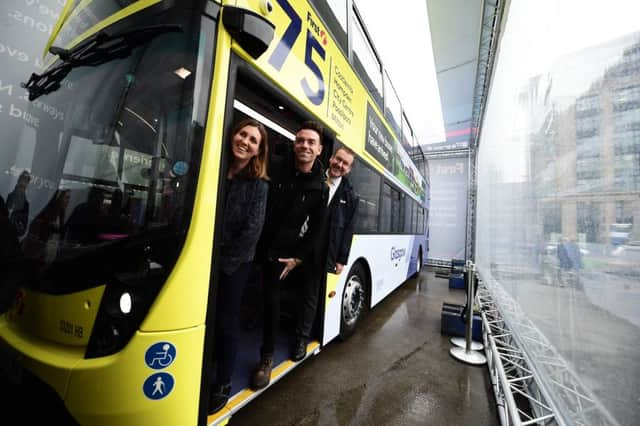Alastair Dalton: Failure to curb cars in cities is throttling buses


While Transport Secretary Michael Matheson was elsewhere addressing a conference event on the railways, experts gathered to debate the parlous state of the country’s bus services.
Less glamorous than planes, trains and cars, buses are still by far Scotland’s most popular form of public transport, but they are facing major problems in some areas.
Advertisement
Hide AdAdvertisement
Hide AdAlthough not a universally bleak picture, passenger numbers overall are in significant decline, down by 10 per cent over the last five years to 393 million in 2016-17.
One of the areas of greatest concern, which the meeting focused on, was Scotland’s largest city.
Professor David Begg, chief executive of trade magazine and events firm Transport Times, and a former Edinburgh City Council transport convener, put it down to one simple factor.
He talked of the Glasgow’s “complete lack of car restraint” – the ease with which you can drive into the city centre, aided by its motorway network, to the many multi-storey car parks as well as parking on streets.
Professor Begg said friends of his who lived equidistant between Scotland’s two biggest cities would never dream of driving into Edinburgh but always took their car into Glasgow.
That attitude has clogged roads with traffic and reduced bus speeds to a walking pace, with passengers deserting to other forms of transport, and some even cycling instead. Without action, Professor Begg said, you are never going to grow bus passenger numbers.
He observed that it was crazy that Glasgow was suffering one of the fastest rates of bus decline at the same time as having the lowest car ownership rate after London.
Ironically, the city’s buses are currently further under the cosh due to an impending pollution crackdown because they are among the most polluting vehicles, despite their high carrying capacity. But the need for operators like First Bus to bring in cleaner vehicles to comply with Glasgow’s new low-emission zone, which will cover the city centre from January, could be to their advantage.
Advertisement
Hide AdAdvertisement
Hide AdBrand new vehicles, with comfortable seats and attractive interiors, free wi-fi and USB charging sockets, could help stem the decline.
But until they get far greater priority over other traffic so journey times are faster and more reliable, more commuters are unlikely to make a beeline for the bus.
As mentioned, the Scottish picture is not all gloomy, with areas like Edinburgh and the Highlands in better shape.
Even in Glasgow, there is some expansion, with First’s airport shuttle from the city centre due to be operated by double deckers from next year because demand has been “growing exponentially”, the company’s bus chief Giles Fearnley told the meeting.
But the industry must make sure it doesn’t dazzle itself with shiny new vehicles, and get right the basics which passengers want. The occasional, reluctant or sceptical bus traveller must be at the centre of their thinking.
Mobile phone apps have improved the availability of information like timetables, and contactless payment has removed the hell of having to have the right coins.
But bus times, route maps and fares must also be visible at every bus stop – and there’s still some way to go to achieve that for starters.
